Forums
- Forums
- Axis And Allies Forum
- General Discussion
- Aviation News
Aviation News
Post a reply
- Go to Previous topic
- Go to Next topic
- Go to Welcome
- Go to Introduce Yourself
- Go to General Discussion
- Go to Screenshots, Images and Videos
- Go to Off topic
- Go to Works in Progress
- Go to Skinning Tips / Tutorials
- Go to Skin Requests
- Go to IJAAF Library
- Go to Luftwaffe Library
- Go to RAF Library
- Go to USAAF / USN Library
- Go to Misc Library
- Go to The Ops Room
- Go to Made in Germany
- Go to Campaigns and Missions
- Go to Works in Progress
- Go to Juri's Air-Raid Shelter
- Go to Campaigns and Missions
- Go to Works in Progress
- Go to Skinpacks
- Go to External Projects Discussion
- Go to Books & Resources
-
11 years ago
 Main AdminIn Abu Dhabi, Lamborghini's Veneno Roadster makes its public debut. (Lamborghini)
Main AdminIn Abu Dhabi, Lamborghini's Veneno Roadster makes its public debut. (Lamborghini)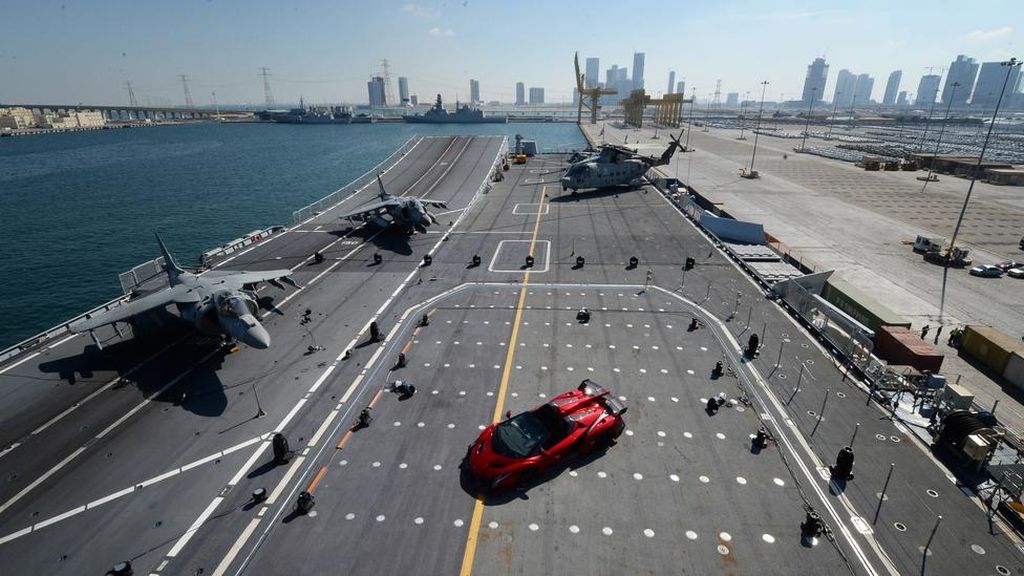
On 1 Dec, on the deck of Italy?s 787-foot-long flagship aircraft carrier, Cavour, docked at the port of Mina Zayed in Abu Dhabi, the supercar maker debuted its latest ? and perhaps wildest ? creation, the Veneno Roadster. The lavish event, which highlights Lamborghini?s popularity in the Middle East, featured food by chef Corrado Corti from Italy?s Hotel Splendido in Portofino, and a procession of supermodels wrapped in the latest from fashion designer Giada Curti. Among those in attendance, the Italian ambassador to the UAE Giorgio Starace, the Admiral of High Seas Forces Paolo Treu and the Italian soccer hero Fabio Cannavaro.
In Abu Dhabi, Lamborghini's Veneno Roadster makes its public debut.
The Veneno Roadster ? of which a scant nine will roll out of Lamborghini?s factory in Sant'Agata Bolognese ? packs a 6.5-litre V12 engine producing 739 horsepower. With all-wheel drive and a curb weight of only 3,278 pounds, the open-top Veneno can make the leap from 0-60mph in 2.9sec, and press on to a top speed of 221mph.
The Veneno Roadster will command a cool 3.3m euros (about $4.5m) ? excluding taxes ? when production commences in 2014 -
11 years ago
 Main Admin
Main Admin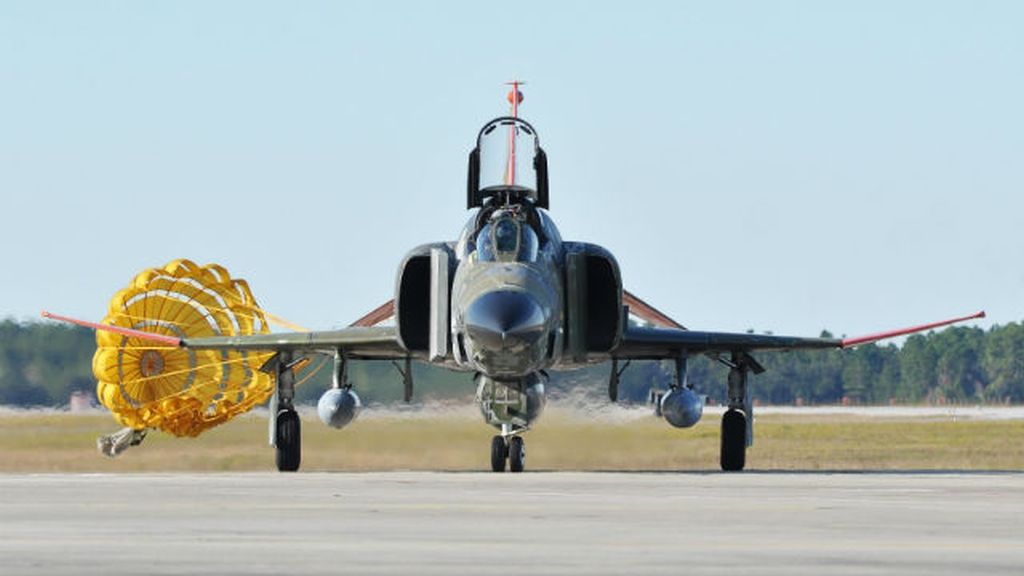
The US Air Force's (USAF) 82nd Aerial Target Squadron (82nd ATRS) has taken delivery of the last of the 314 QF-4 full-scale aerial target (FSAT) drones at Tyndall Air Force Base (AFB) in Florida, US.
Bearing a serial number 68-0599, the QF-4 is a modified variant of the decommissioned F-4 Phantom fighter jet, and has spent more than 20 years in the boneyard at Davis-Monthan AFB in Arizona, US, prior to conversion by BAE Systems.
The drone is scheduled to serve as a target for a modern piloted jet during training exercises, to eventually provide vital data to both US and allied forces.
Flown either by a remote control or with a safety pilot for performance monitoring, the QF-4 is a supersonic, reusable drone designed to serve as a realistic full-scale moving target for newly developed air-to-air weapons testing and aircraft training at Tyndall AFB, and Holloman AFB in New Mexico, US.
Modified at BAE's Flight Systems facilities at Mojave Airport in California, US, the drone replicates enemy aircraft manoeuvres in test and training exercises, and is integrated with electronic and infrared countermeasures for evaluation of the aircraft and weapons flown and fired against it.
An inbuilt Gulf Range Drone Control System enables unmanned operation of the QF-4 drone, which can also be manually controlled using a mobile control station during take-off and landing sorties.
Having replaced the QF-106 as USAF's target drone of choice in 1998, the QF-4 is expected to be superseded by the QF-16 in 2014, a converted F-16 Fighting Falcon, due to limited availability of F-4 fighters and the continuing advancement of combat aircraft, such as the F-22 Raptors.
Around 60 QF-4s are currently operational at Tyndall AFB and Holloman AFB. -
11 years ago
 Main AdminA Tribute to Paul Walker
Main AdminA Tribute to Paul Walker
If I had a time machine , I would of liked to have met him.
RIP Paul Walker -
11 years ago
 Main AdminLockheed Martin F-35 Lightning II Stealth Fighter Cockpit Demonstrator Hands-On
Main AdminLockheed Martin F-35 Lightning II Stealth Fighter Cockpit Demonstrator Hands-On
-
11 years ago
 Main Admin
Main Admin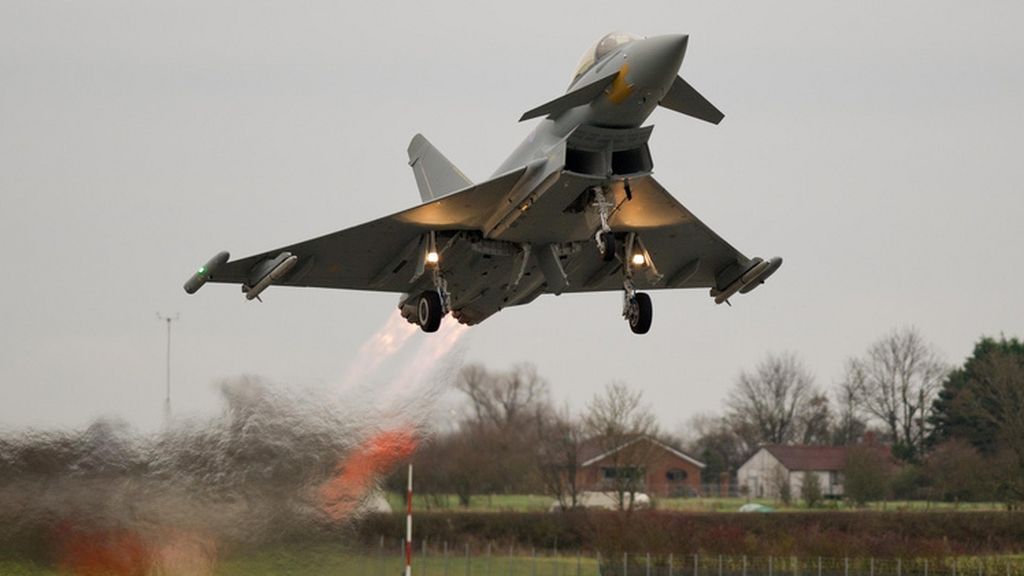
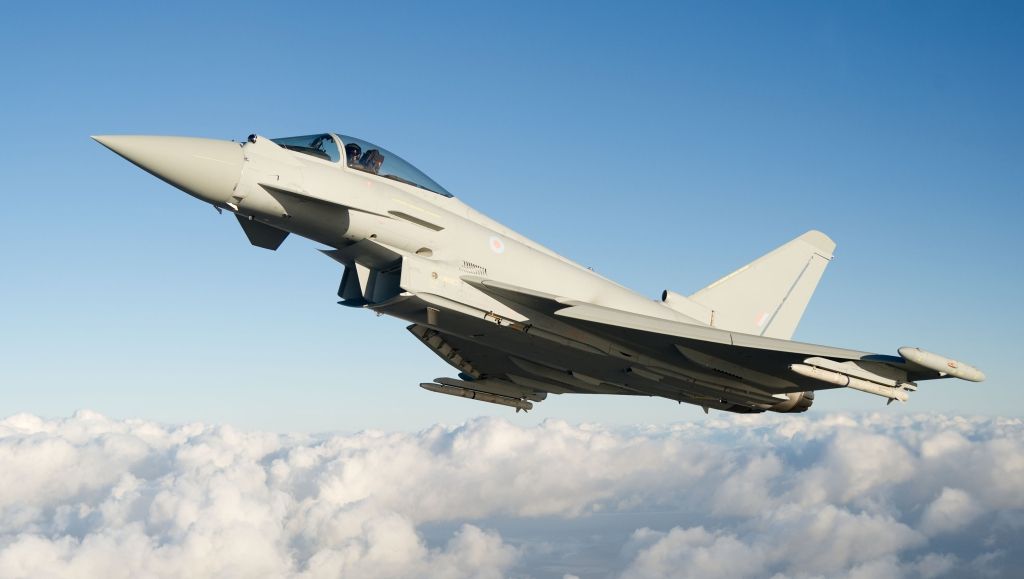
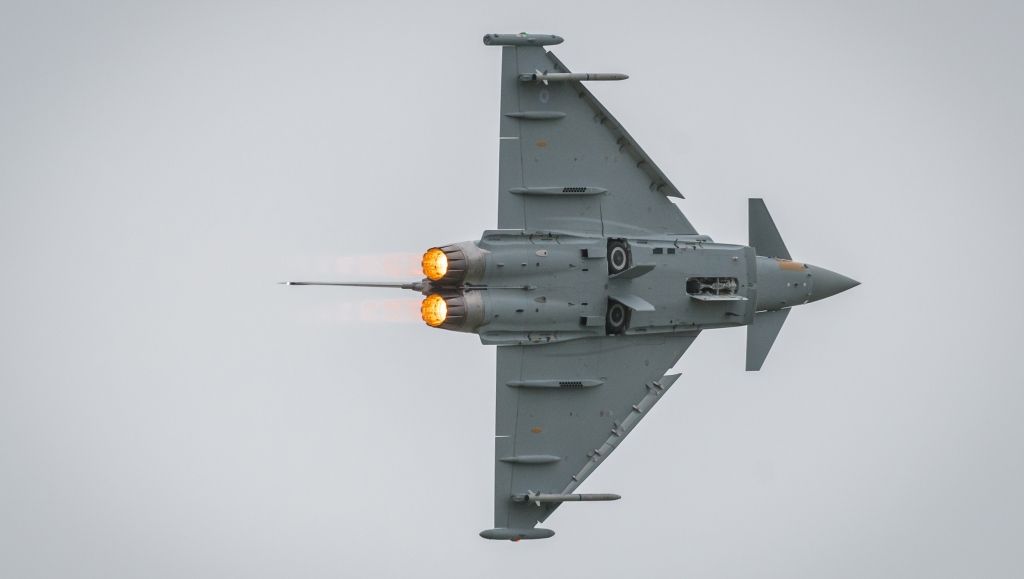
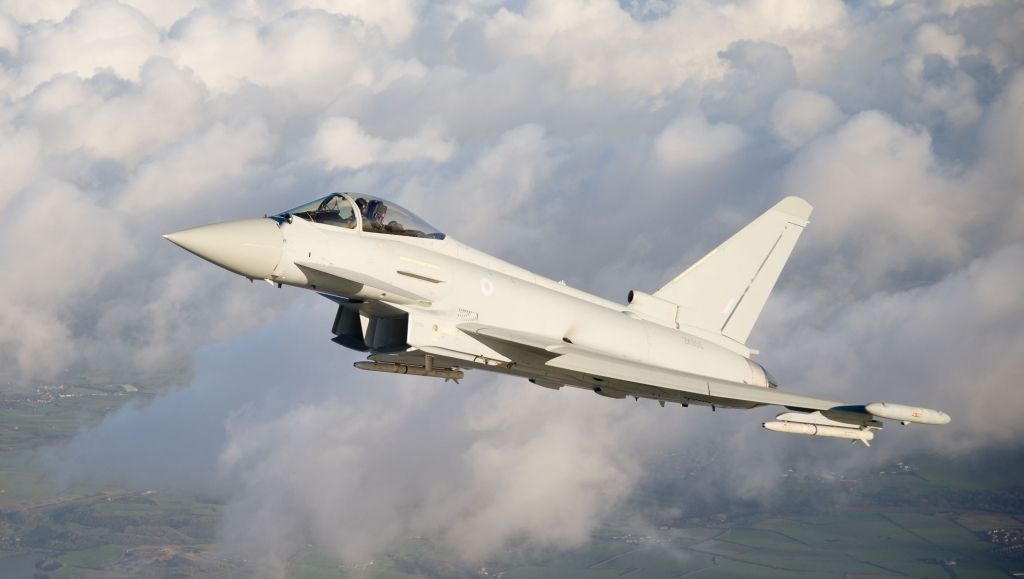
The first of a new standard of Typhoon - Tranche 3 has started its series of flight tests
The latest Typhoon, known as a Tranche 3, represents a major stepping stone in the evolution of one of the world?s leading combat aircraft.
Under the skin changes
The Tranche 3 standard embodies a number of under the skin changes that effectively future proof the aircraft and make it more attractive to current and potential export customers.
Taken together there have been 100s of modifications, changes and additions which effectively means Typhoon has now taken a massive step forward.
Provisions allowing additional capability
Mark Kane, BAE Systems Managing Director - Combat Air said: ?For casual observers the aircraft is little changed from its sleek predecessor but it has a number of provisions that will allow it to take on additional capability in the future. One of the few visual clues is a number of small panels on the fuselage which are there to accommodate the fitting of conformal fuel tanks.
?Once fitted, these would give the aircraft greater range and free up positions under the aircraft for larger or additional weapons.
?At the nose a new internal structure has been built and work has been carried out on power, cooling and electronics so that a new E-Scan radar could easily be accommodated.?
Production of the first Tranche 3
The first Tranche 3 has been produced for the RAF by the Eurofighter consortium and assembled by us. British Single Seat aircraft no.116 took to the skies for the first time with pilot Nat Makepeace in the cockpit.
Mark added: ?While these test flights will help to demonstrate the effectiveness of the airframe there are a number of other ongoing test programmes that will add to Typhoon?s capability?.
Integration
In November the first in a major series of flight tests to integrate the MBDA Storm Shadow missile onto the aircraft took place. Earlier this year Eurofighter Typhoon announced a contract to develop the integration of the Meteor weapon system.
During the same period another development aircraft has been modified to take an E-Scan radar and is currently being prepared, at Warton, ahead of its first flight.
Tranche 3A contract
Under the Tranche 3A contract signed in 2009, a total of 112 aircraft have been ordered for the four European partner nations of Germany, Italy, Spain and the UK, with 40 aircraft bound for the Royal Air Force.
FROM HERE - http://www.baesystems.com/article/BAES_163601/typhoon-tranche-3-takes-to-the-skies?from=homepage-rzz -
11 years ago
 Main Admin
Main Admin -
11 years ago
 Main AdminCanadian Mosquito getting nearer to flight.
Main AdminCanadian Mosquito getting nearer to flight.
For latest updates follow - https://www.facebook.com/VicAirMtnc?ref=ts&fref=ts
-
11 years ago
 Main Admin
Main Admin -
11 years ago
 Main AdminMeanwhile here in Canada
Main AdminMeanwhile here in Canada
-
11 years ago
 Main AdminWICHITA, Kan., 13 Dec. 2013. The Scorpion intelligence, surveillance, and reconnaissance (ISR)/strike aircraft from Textron AirLand LLC, a joint venture between Textron Inc. (NYSE:TXT) and AirLand Enterprises LLC, has completed its first flight.
Main AdminWICHITA, Kan., 13 Dec. 2013. The Scorpion intelligence, surveillance, and reconnaissance (ISR)/strike aircraft from Textron AirLand LLC, a joint venture between Textron Inc. (NYSE:TXT) and AirLand Enterprises LLC, has completed its first flight.
The aircraft took off from McConnell Air Force Base in Wichita, Kan., and conducted a range of handling maneuvers for roughly 1.4 hours of flight. This first flight marks one of the fastest developments of a U.S.-built tactical jet, progressing from initial design to first flight in less than 24 months, officials say.
"Today's first flight is a major milestone for the Scorpion as the program transitions into the flight test phase," explains Textron CEO Scott Donnelly. ?When the design phase began less than two years ago, we were confident that we would deliver a uniquely affordable, versatile, tactical aircraft by taking advantage of commercial aviation technologies and best practices. Today?s flight met all expectations, and keeps us on track towards certification and production.?
Pilot Dan Hinson, an engineering test pilot with over 5,000 flight hours in 79 different types of aircraft, and co-pilot David Sitz operated the Scorpion during its first flight.
?The flight was completed according to plan,? Hinson says. ?Having flown many tactical aircraft throughout my 23-year career with the US Navy and with other aircraft manufacturers, I can say that the Scorpion compares very favorably to more costly aircraft currently used for low-threat missions. It showed impressive stability and responsiveness closely matching all of the predicted parameters for today?s maneuvers?it?s going to be a highly capable aircraft for the ISR and homeland security mission set.?
The Scorpion was announced in September 2013 as a demonstration aircraft designed to accommodate the budget constraints and shifting mission requirements of the U.S. Department of Defense and U.S. partner nations. Powered by twin turbofan engines generating 8,000 pounds of thrust, the Scorpion transitions easily between low speed and high-subsonic speed, as needed for diverse missions such as irregular warfare, border patrol, maritime surveillance, emergency relief, counter-narcotics, and air defense operations.
The Scorpion has a cruising speed of up to 450 ktas (517 mph), with a ferry range of 2,400 nautical miles. The aircraft carries an internal payload of up to 3,000 lbs., as well as wing-mounted precision munitions.
from here - http://www.avionics-intelligence.com/articles/2013/12/textron-scorpion.html
Post a reply
- Go to Previous topic
- Go to Next topic
- Go to Welcome
- Go to Introduce Yourself
- Go to General Discussion
- Go to Screenshots, Images and Videos
- Go to Off topic
- Go to Works in Progress
- Go to Skinning Tips / Tutorials
- Go to Skin Requests
- Go to IJAAF Library
- Go to Luftwaffe Library
- Go to RAF Library
- Go to USAAF / USN Library
- Go to Misc Library
- Go to The Ops Room
- Go to Made in Germany
- Go to Campaigns and Missions
- Go to Works in Progress
- Go to Juri's Air-Raid Shelter
- Go to Campaigns and Missions
- Go to Works in Progress
- Go to Skinpacks
- Go to External Projects Discussion
- Go to Books & Resources
